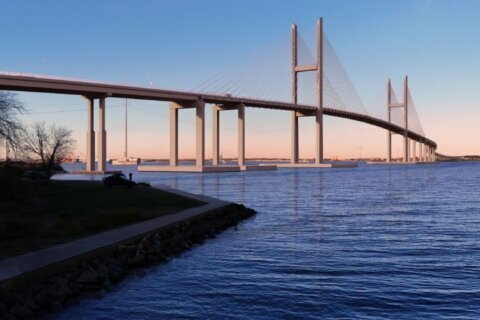WASHINGTON — A “pie in the sky” plan to send people speeding hundreds of miles in just a few minutes may be moving somewhat closer to reality.
In an event at the Newseum Thursday that resembled an Apple rollout in its evangelical zeal, Hyperloop One praised 11 semifinalist groups, backed by state transportation departments among others, for specific U.S. routes that could be the first parts of a nationwide network.
The closest proposal to the Washington region is a connection between Pittsburgh, Columbus and Chicago.
Essentially, the vacuum tube system would work like today’s interstate highways, with a limited number of entrances and exits serving as stations along the way.
Pods in the system would use magnetic levitation and the reduced pressure of the vacuum tube to glide long distances at speeds up to 700 mph.
Any construction would require major land acquisition; approvals from local, state and federal governments, and proof that the system actually works.
“What we’re talking about is not just speed, but packetized transport, fully autonomous transport, direct to destination … and it can be for people; it could be for freight; it could be for cars,” Hyperloop One Senior Vice President Nick Earle said.
If self-operating cars develop as automakers are promising, Earle said, the cars could have the software to drive into and out of a hyperloop pod, allowing for a quick, seamless door-to-door trip.
“Take an Uber 600 miles to somewhere for dinner and come back,” he said.
While airplanes can already make sort of the national connections that the company is promising in a similar time frame, Hyperloop One focuses on the way that such travel could work on demand.
A test track that looks something like a large oil pipeline has just been completed in the Nevada desert.
Former U.S. Transportation Secretary Anthony Foxx, who served under President Barack Obama, said that aside from the major obstacle of actually building something that the company can convince people is safe, another major barrier is that there is no existing way to fit something like this into America’s existing oversight structures.
“This is the next thing, and hopefully we’ll figure it out,” Foxx said.
He suggested that the company begin with freight traffic — which could reduce the number of trucks going in and out of ports such as Los Angeles — and then transition to passenger trips later after people see that it can work.
“The airplane was pie in the sky, and the car was pie in the sky … virtually every mode of transportation we enjoy today was at one point kind of a pie in the sky idea,” Foxx said after the event.
“We have to accept that there is a stretch here, but it’s a stretch that could yield pretty significant benefits. What surface transportation mode today can get [to] 700 mph?,” he said.







